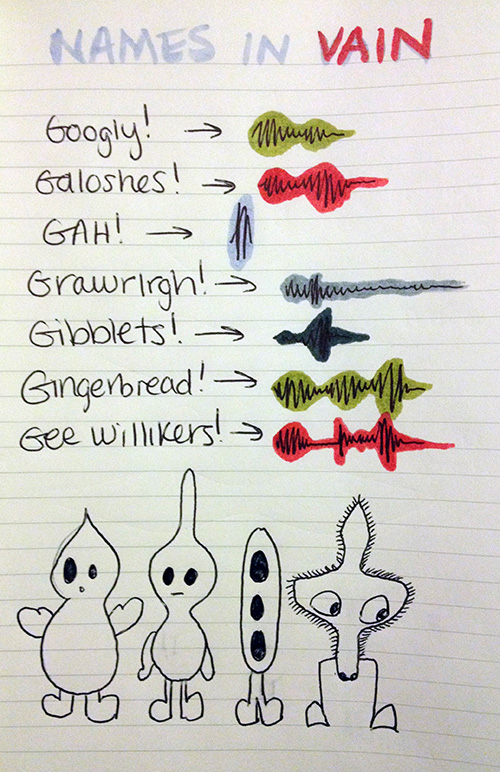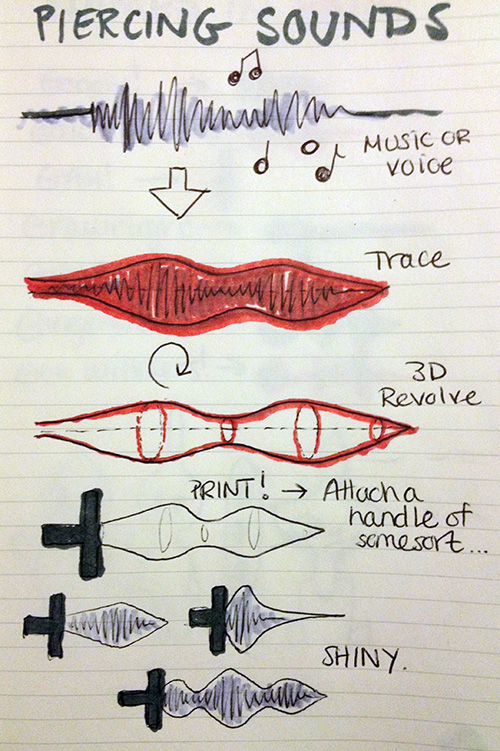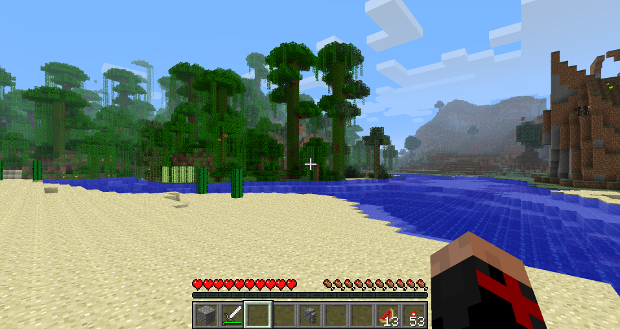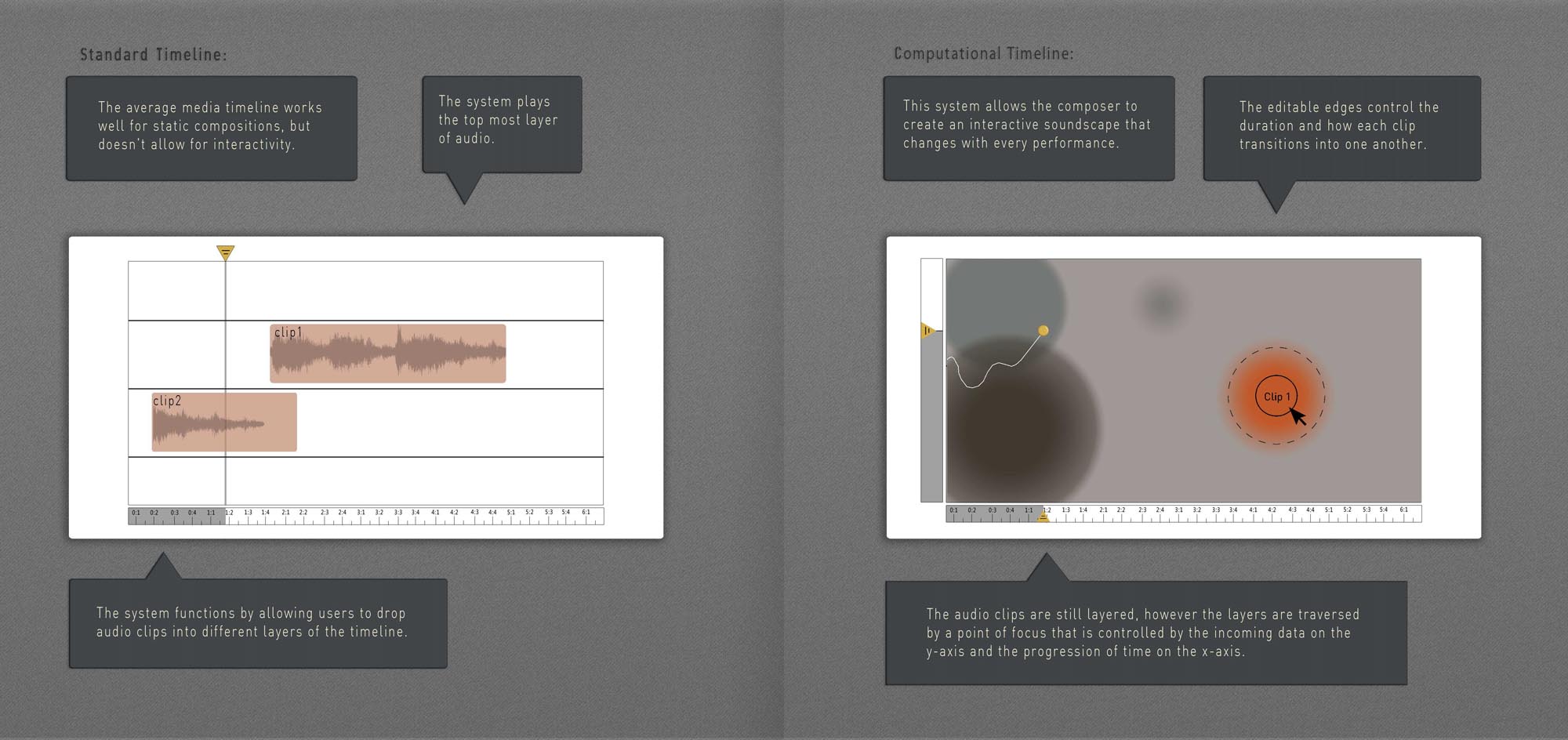I have a few ideas for the types of data I’d like to work with for my Info Vis project but I’m not sure which would be the most interesting, have relatively accessible information, and/or lend itself to an interesting visualization. A lot of my ideas pertain to Judaism, which has a lot of somewhat complicated laws that might be easier to learn/understand if they could be visualized:
1. Information pertaining to Koshrut (i.e. whether Jews are allowed to eat certain types of food). The types of information I could obtain about Koshrut is pretty diverse; I could gather information about the specific laws and whether these came from the Torah or the Misnah (basically if it is the 5 books of Moses or is from the Rabbis), as well as a more practical focus on what products you can actually buy in a super market, what companies they come from, what level of Koshrut they pertain to, etc.
2. Laws and Customs specifically pertaining to Shabbat (the day of rest from Friday evening to Saturday evening). There are a lot of dos and don’ts when observing Shabbat, as well as different customs that are followed by different types of Jews. Usually these customs are dependent on what part of the world a specific family is from.
3. Prayers – when, where, with who, for what purpose is each prayer supposed to be said – pretty self-explanatory
I am also really interested in the diversity of Jews both in terms of location and in terms of level of practice. Given this,
4. Assimilation of Jews in different countries, or maybe specifically the US – how, when, why Jews began to assimilate, what traditions they continue to follow and which were deemed to extraneous to keep up with, where most assimilation occurred, etc.
5. Different Customs – different Jews around the world have varying customs for different aspects of Judaism, which types of Jews follow what customs, where and why these customs originated, etc.
I have a few other ideas that have nothing to do with Judaism but are just various things that I like/am interested in:
6. Pronunciations of English words and where they are used – different parts of the country pronounce certain words differently and it would be interested to be able to explore this using data vis and possibly audio as well
7. Price is Right Data – I don’t know about the rest of you but I have been watching this show ever since I was little and by now know every game pretty much by heart but I’ve kind of always wondered if you are actually on the show what is the best game to play in terms of having the best chance of winning. I think it would be interested to explore the payoffs of different games using probability models.
8. My iTunes Data – I’ve noticed that my taste in music has changed a lot over the past few years and my iTunes pretty much has a record of this through the play count and the last played data it tracks. It would be interested to see the progress in my own personal music taste by visualizing this (and maybe other) data.
9. Twilight Zone – I love this show and I don’t know specifically what data I would want to scrape regarding this show but there are definitely a lot of different kinds of data that I could scrape so I think there are possibilities.
10. Roller Coaster Data – Ever since I was about 8 I’ve been kind of a roller coaster junkie and I personally rate every one I right even internally or through description to friends or family. It would be cool to extract data about different types of roller coasters to get more of an objective comparison to go along side my subjective one.
11. Harry Potter – I through this one in here just for the hell of it. There are definitely lots of things that could be tracked about the books but I think it would be cool to do some sort of timeline and/or relationship graph of the entire series.
I know this is a lot, sorry for causing anyone who read this post to read so much!
Daily Archives: 06 Feb 2013
John
06 Feb 2013
I spent a long time considering what to visualize and how to get the data make something compelling. I’m very anti scrape-and-see w/r/t these sorts of projects because (a) I’ve done that before and (b) I think scraping big text files for key terms is misleading and generally not as interesting as a lot of people seem to think.
So while I was ideating (as we designers do) I remembered a funny thing that happened this summer. I was at a hippy parade thing in Seattle (as you do) and I overheard a five-year-old kid ask his father “what’s the worst thing that’s ever happened to you?” which was the funniest and most amazing question for a little kid to ask anyone.
Anyway, that got me thinking. What would it look like to visualize answers to that? How would I aggregate those answers in a meaningful/compelling way? I’m not sure yet, but I’d like to find out.
That’s the first idea.
The other two stem from a similar germ of asking people to make spontaneous decisions and then using those decisions to model something (what, exactly that is, I’m not yet sure).
Idea number two is this: ask people how uncomfortable a series of words makes them and rank them.
Idea three is a universal bracket (a la the NCAA tournament) where we start with 32 sets of binary pairs which are then filtered to 32 winners. Each winner is then randomly paired with another winner then paired down and so on…I’m pretty sure this process might scientifically determine the best thing ever.
Here’s a photo of my sketchbook (where the magic happened):
Anna
06 Feb 2013
So! Project 2. ‘Bout that time, eh?
I am completely incapable of deciding between random pipe dreams I have, particularly when it comes to balancing what’s compelling with what I can feasibly do. Here’s a rough list of ideas I’ve had in the last month or so, with elaboration on one or two:
– story stealer : a concept based loosely on a story I’ve been writing for a long time. I envision a ‘master consciousness’ looks at two very different narratives and peels away elements, appropriating them and combining them to create its own story with eerie resemblance to both. I’d really like to push this away from the standard, mad-lib-style, mix-and-match algorithms that just seem to lead to disjointed and clearly computer-generated text. In particular, I want to know how well code can analyze a narrative for things like ‘tone’ and ‘voice’ and then dynamically write new paragraphs using those learned elements, even if the topic is entirely different.
– names in vain : also based on a story I wrote. People seem awfully concerned about ‘using God’s name in vain’, and so they tend to say a lot of other ridiculous things instead. Do they think about the consequences? What if, every time somebody yelled a nonsense word as an interjection, it generated a little half-deity… something more than human, but not quite omnipotent? What would they look like? Would the word you said matter? The sketch below bases the little not-gods on the shape of the sounds, but that isn’t the only way their forms could be generated.

– piercing sounds : the last story-inspired idea. Again based on the shapes of sounds. Here, I’m interested in the relationship between energy and matter, and the ability of people to create solid objects using their voices. In the story, sound is wielded largely as a weapon. There’s something elegant about knives as artifacts, and the shapes of sounds lend themselves nicely to creating some interesting blades. Obviously for the purpose of a real-world project this would be done in blunt plastic.

– two screenwriters out for coffee : a dynamically written screenplay of a conversation between two well known screenwriters/playwrights, where the topic is variable but the responses all sound unmistakably written by said writers. Think Sorkin meets Fuller. Or Shakespeare meets Arthur Miller…Hilarity ensues.
– better soccer data viz! : see my looking outwards post 5.
– radiocarbon database art installation : I’ve got the data… I’d just need to figure out how to make it look as cool as it is.
– when do I take all these medications I’m prescribed, and why? : helpful pharmacology info for real people in real life.
Andy
06 Feb 2013
Hello.
So I mentioned maybe two weeks ago that I wanted to do generative music from the parameters of a video game. At that time Golan suggested to me that I should find an open source game from which I could extract my parameters for generating. Since then I have done hours of scouring. What game would it be? I had an idea which kind of grew out of my Sifteo project that I could take an open source multiplayer game, and have interactions between different characters create different chords, and then the sound could somehow then affect the gameplay. As I continued to think, though, I felt like I should limit myself to a single-player experience in a language with which I was familiar so that I could focus most of my attention on the music and not the game itself.
After much browsing and a really poetic experience that I unfortunately didn’t think fit the project, I think I found my source game.
This isn’t really a game per se, but I think it has an attractive simplicity and mathematical depth that it could produce some really good music and a cool experience. Some parameters I thought of include: number of living particles/dead, location of living particles, number of moving particles, average color difference from frame to frame, survival and birth rules, average solid color block size, triggers for clear and reset, time application has been running, number of user interactions with the program (or an average of this per x seconds), and help me come up with more! The messaging system isn’t built in, but with some oscp5 action I could fairly easily write some signal sending I think.
The receiving program would most likely be Max/MSP, but Pd or Nyquist are alternatives I am considering. I think the next step is to build the generative music part and see what kind of sound I can come up with, and then we begin merging and tweaking the connection of the two.
Michael
06 Feb 2013

First published in 1970, Conway’s Game of Life is the prototypical example of cellular automata. What I find fascinating about this simulation of artificial “life” is the incredible ratio of emergent behaviors to governing rules. While there are many variations, the original game has only four basic rules, yet these can give rise to machines that translate, reproduce, oscillate, and count, among many other behaviors. There are plenty of good simulators, both online and offline, though I haven’t played with any of them extensively enough to have a recommendation. Golly seems to have very high praise. Over the past four decades, many initial conditions have been identified which give rise to desired behaviors. I’m interested to learn if there is a way to essentially run the game in reverse from an end condition or behavior to its simplest origin. This is difficult, as the game is only deterministic in the forward direction, given that cells and structures can cancel out and leave no trace.
Gaussian Processes (the ML/statistical technique)
Unfortunately I haven’t found any great images that make sense on their own, so instead I’ll recommend this gentle introduction to the topic.
Gaussian processes are a set of statistical techniques from machine learning and robotics that can be used in a variety of ways to make predictions about missing or sparse data. Rather than explain the details of how this works in a short space, I will try to describe what it can do for us. If I told you the barometric pressure outside my house, and you knew the pressure outside of yours, we might guess that the pressure at a friend’s house in between ours would be about the average of our two numbers, assuming the distance between houses isn’t all that great and there aren’t any massive environmental discrepancies. Expanding this, if we had a tight enough mesh of sensors across a much larger area, we can predict the empty spaces fairly well. We don’t usually have the luxury of uniform information density, though, so this method breaks down easily. Gaussian processes approach problems like these from a different direction, where the “distances” that we care about actually exist in a feature space containing not just latitude and longitude, but other values that describe that point in physical space. One particularly notable application is the prediction of soil quality in countries like Honduras where there are areas where direct measurements simply cannot be made. We can still get indirect information about these areas from satellite images and geographical data, which can tell us things like distance from rivers, altitude, foliage density, etc. If we have soil quality data in other far away locations with similar characteristics, we can use gaussian processes to make predictions even in areas where we’ve never been. See this paper for more details.
…So why am I suggesting this is a generative process? It’s a bit of a stretch, but I would argue that this is a generative method because it can be used with real, known data to create predictions anywhere in the world. If you still aren’t convinced, consider this: If I mined the Lord of the Rings books for as many geographical descriptions as I could find, I could use data from the real world to give you my prediction about what plants would most likely grow in the Shire and the pH of the soil in Mordor, along with a numerical confidence for each. (Or maybe I shouldn’t write blog posts this late at night.)
Minecraft (and other procedurally-generated worlds)
I love Minecraft. Minecraft is art. My apologies for yet another Minecraft-related Looking Outwards. Part of what attracts me to this game the most is that no two worlds are even remotely similar. The development team has done an amazing job at procedurally generating voxellated terrain, and in recent years terrain generation has expanded to include diverse biomes including deserts, swamps, and tundra (complete with reproducing plants and fauna). When a player finds a village in the middle of the plains, the houses and structures there are unique to that game and likely will not be generated ever again. The world is also boundless. As the player walks in a certain direction, the world continues to generate far beyond the player’s field of view. (It used to be that walking in a huge circle would result in bizarre discontinuities in the landscape when new land merged with old, but this has been fixed recently.) In my opinion, the procedural nature of the game is what provides the sense of discovery rarely found in other games. It can be found to some degree in huge worlds like those in the Elder Scrolls series, but these still fail to feel like true discovery, because the player knows that many others have found the exact same hard-coded locations. In Minecraft, that scary cave you found is yours and yours alone.
Keqin
06 Feb 2013
I’m thinking about to generate some simple graphics by importing some pictures. For example, I import a pic which has bed, desk, and a bunch of stuffs on the desk. And using cv compute the general shape of the objects on the pic and then generate a bunch of such shapes to form the generative pictures.
I’m still thinking about it. I just want to make some simple but very beautiful things. And this is also a simple way to describe a pic by these simple shapes and colors I think.
John
06 Feb 2013
So, I’m really interested in generative work that functions as an interplay between a controller who sets things in motion and a second group who produce some novel/unique result set. Below are examples of this sort of work utilizing different techniques and even species to fulfill themselves.
Terry Riley In C
This is an aleatory composition by Terry Riley in which musicians are given a selection of phrases to play more-or-less as they choose with minimal instruction from Riley’s score. The resultant structure of piece varies widely from performance to performance. This piece demonstrates the significance of meticulously considered input and algorithmic process in service of exceptionally beautiful output.
Hubert Duprat Trichopterae
Duprat’s project involves removing carapaces from fly larvae and placing them in enclosures with decorative materials (gold, precious stones etc.) The larvae utilize these materials to recreate their protective shells, which are then shared, shed and augmented by successive generation of larvae. The result of this process is the production of art objects whose materials are selected by Duprat, but whose form is created by the natural life processes of insects. Here’s a link to an article about the work in Cabinet.
Joshua
06 Feb 2013

A sketch I did of the truss in Rhino. The truss must reach the cylindrical pole to lift a load, and only touch the playing field at the opposite end. The colored lines are the springs of the truss. Using Grasshopper I simulated the springs and color coded each line according to whether it was in tension(reds and purples) or compression (greens) or unstressed (light blue).
The idea is to find the best (optimal) truss given a bunch of constraints and a specific loading. The truss is a mesh where each node is a connection between struts, and each edge is a strut, which is approximated as an ideal elastic spring. This is actually an assignment for a mechE class called Stress Analysis, but the nature of the project makes it perfect for creating a genetic algorithm for optimizing the truss.
The basic structure would be:
1)mate parent trusses two create a bunch of offspring.
2)Introduce mutations.
3)Test all offspring for fitness.
4)Select fittest offspring.
5)Repeat until solution appears to be converging (not changing very much compared to the previous solution).
The main goal would be to minimize deflection and weight of the truss.
In general optimization problems have a ‘cost function’ or a function that evaluates how good or bad a certain combination of variables is. For example a chair could have a few parameters like height, weight, softness, and some complex mathematical expression might describe how these parameters combine to make a comfortable or not-so-comfortable chair. In the case of a truss, where any number of connections are possible and the variables involve a large number of vertices and edges, determining such a cost function would be incredibly difficult. Instead my plan is to simulate the behavior of the truss with springs under an idealized load. The performance of the truss (like deflection, or maximum stress) would be quantified and used directly as the fitness of that truss. Thus the cost function would instead be a physical simulation. Run times may be an issue.
I was trying to do this in processing but realized that it really is not made for computing precise values. So I will do this in Matlab.
Caroline
06 Feb 2013
For my Generative assignment I want to create a version of the audio timeline that allows for input. So instead of composing for a track that will be the same each time it is played back, this program will allow the user to create a sound scape that will be different every time audio is plugged into some live data. Each blob on the right is linked to a track in ableton live, so the sound can be any mixture of synthesized and granular sound.



